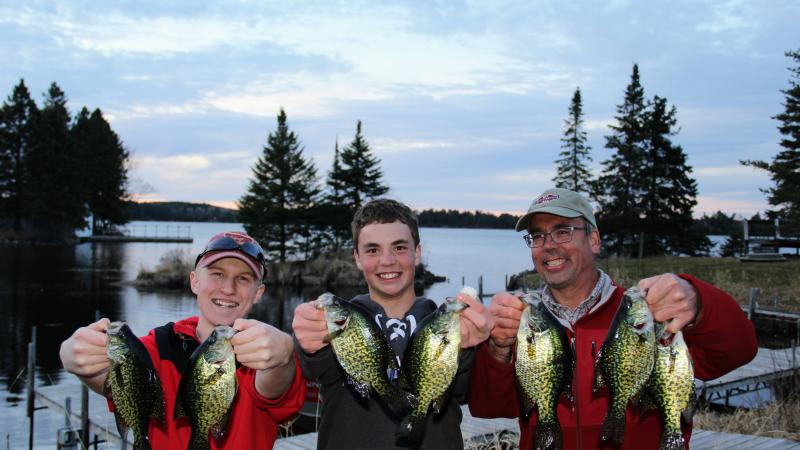
Crappie Fishing
Anyone that has ever fished with me knows that I have a passion for crappie fishing. They are a challenge to locate on a regular basis and once located can be a lot of fun to catch for all the members of your family. I almost forgot… they are delicious!
On any given year our best crappie bite is when the surface temperature is about 62 degrees F. These temperatures can occur from about May first through the middle of June. I know that this is not very specific and this is not an overgeneralization. Lake Vermilion is a very large lake with many bays and channels. The water depth and clarity varies in these bays and channels; therefore, the bite will also vary. Initially the crappies will be the most active in the shallower areas with stained water (i.e. Black Bay) and then working out to the deeper and clearer waters.
Sometimes crappie fanatics try to time the bite on any given body of water. The odds are usually against timing the bite exactly. Lake Vermilion is the perfect lake for the serious crappie and panfish anglers because it is actually many lakes in one and the exact timing of the bite is not that critical. Once the water warms above 62 degrees, the crappies are usually harder to locate. They can still be found; however, most anglers turn their attention to other species during this time.
Early in the season crappies seek the warmest water they can find. This warmer water is found on the south facing shorelines. I prefer shorelines that have some shallow water structure. Emerging vegetation, trees, and boulders will all provide cover. Shallow water with gravel and small rock will provide spawning beds.
I have been a guide for more years than I want to admit. Every year I search for the elusive Black Crappie and every year I locate them in different areas. The search is endless. This is one of the reasons I enjoy fishing for these paper-mouthed slabs.
I like to use light-medium to light action rod with 4 lb. test mono for Crappies. To this combo I will use a slip bobber with a tiny jig. This method will allow me to fish all water levels. Jig size should be from 1/8 oz. to 1/64oz. Usually I like to work from large to small depending on fishing conditions. The jig may be feathered or plain. On a plain jig I like to attach some creature (plastic tail) or critter (minnow, wax worm, etc.). Color is always the $64,000 question. I will always start out with some light color and move to the darker shades. Every year I get out-fished by one of my clients that bring some ridiculous color and shaped jig that they got in some 25-cent grab bag. My best advice to anyone is to be very flexible with the size and color until you can establish some pattern.